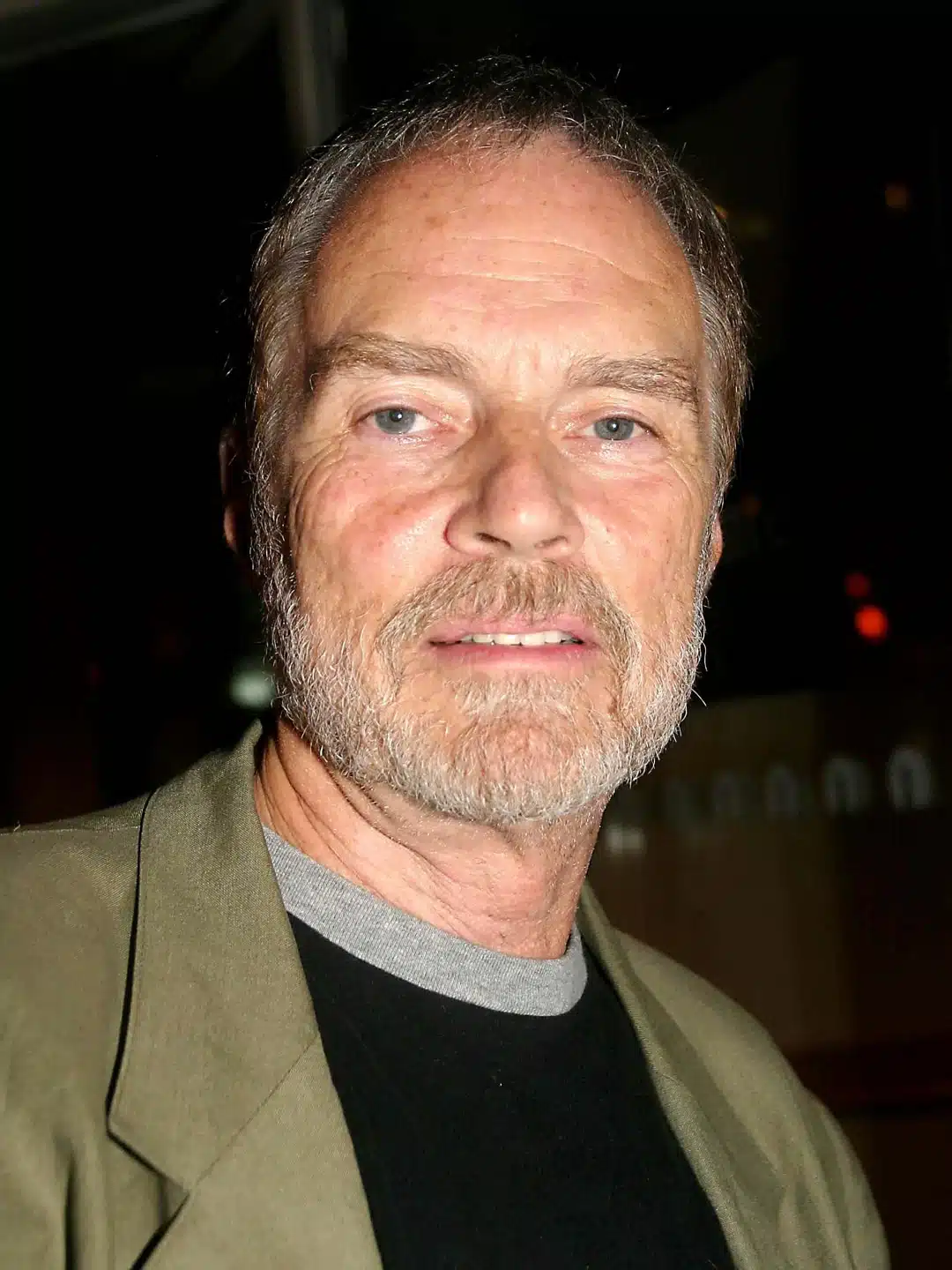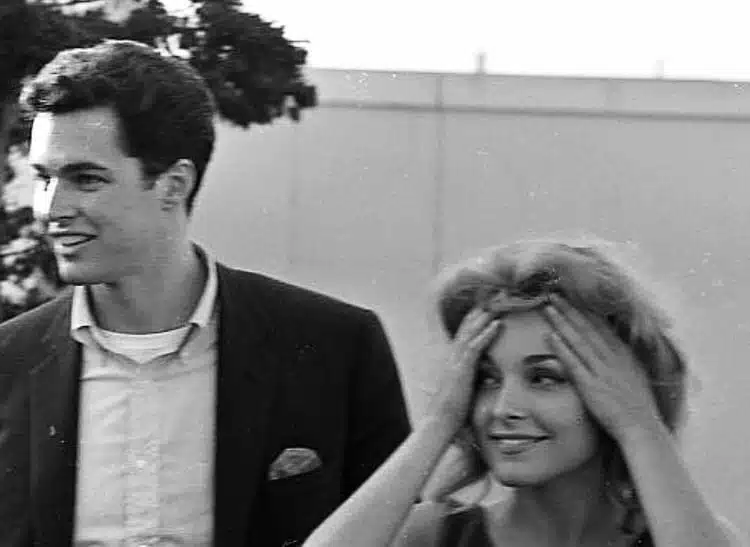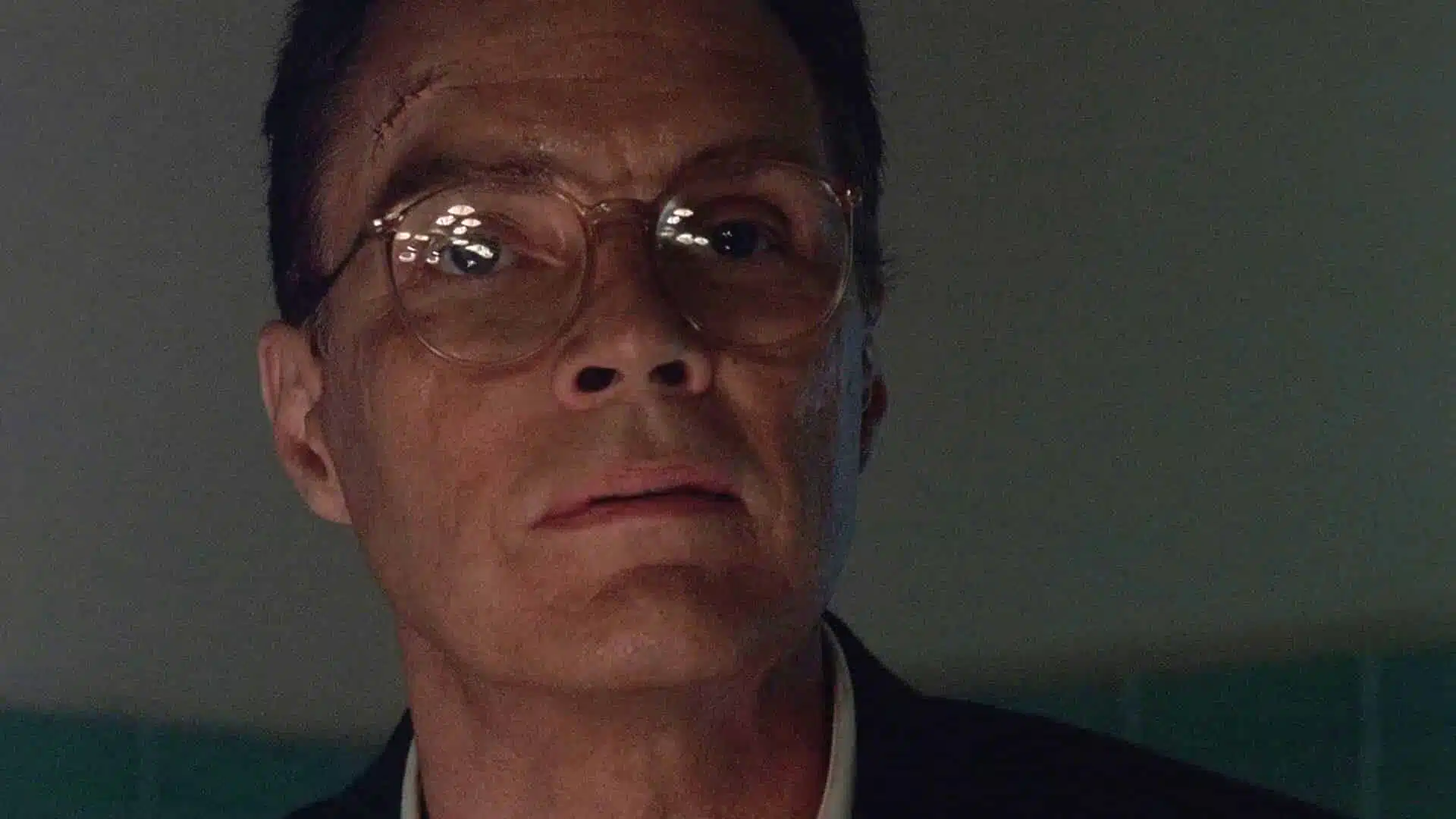Early life, family, educational background
American novelist, painter, sculptor, and actor George Richard Beymer Jr., was born on 20 February 1938, in Avoca, Iowa, USA, making him a Pisces. His mother, Eunice Beymer (née Goss) was a stay-at-home mother, and his father, George Richard Beymer worked as a printer. The family moved to Los Angeles in 1940, and Richard subsequently matriculated from North Hollywood High School.
Richard found fame in several well-known films – in 1959, he played Peter in “The Diary of Anne Frank,” then Tony in 1961’s “West Side Story”, and portrayed Ben Horne in the original 1990 to 1991 television series “Twin Peaks,” reprising his role in 2017.
https://www.facebook.com/photo.php?fbid=371493755087728&set=pb.100066813195830.-2207520000..&type=3
Career
Richard’s acting career actually began when he was a young child – from 1949 to 1953, he regularly appeared in the children’s television series “Sandy Dreams.” Richard would rehearse for the show after school, and they would record on Saturdays. He was 13 years old when the show ended.
In 1953, he appeared in his film debut, “Stazione Termini,” directed by Vittorio De Sica, who cast Richard based on his likeness to Jennifer Jones. He was also signed to Jennifer’s husband, David O. Selznick, who suggested him as the perfect actor to play Jane Wyman’s piano protege in 1953’s “So Big”; their contract only lasted for a year.
Afterwards, Richard found a plethora of jobs; in 1954 he appeared in “Johnny Tremain” and “Cavalcade of America”, then later that year, he auditioned to appear in “Rebel Without a Cause” as Sal Mineo, but he wasn’t cast in any role. He also guest-appeared in quite a few films and series, including “Make Room for Daddy,” “Jane Wyman Presents The Fireside Theatre,” “The Gray Ghost”, and “Schlitz Playhouse.”
In 1959, George Stevens cast Richard as Peter Van Daan in the successful film “The Diary of Anne Frank”, produced by 20th Century Fox, who Richard signed a contract with, making him an upcoming star in the industry. William Perlberg, producer of films including “It Happens Every Spring” and “Twilight of Honor,” never worked with Richard directly, but did speak about him: ‘It’s a thing that periodically happens out here. Somebody comes along and talk starts and agents and studios keep talking and talking. Like an avalanche, the talk gathers speed. Ultimately that ‘somebody’ turns out to be a big name in Hollywood only.’ Richard closed the year with an appearance in the television series “Playhouse 90”, as LeRoy Cadman in the episode entitled “Dark December.”
The following year he was cast in the supporting role of Bob Bannerman in the musical comedy film “High Time” – the movie starred Tuesday Weld as Joy Elder and Bing Crosby as Harvey Howard. He also worked on the film as a co-producer, and later spoke about his performance: ‘I wanted to be a very good actor… I wanted to work and let the work stand for something.’
That June, Richard was cast as Tony, the lead role in 1961’s crime drama musical “West Side Story,” based on the screenplay written by Ernest Lehman, who adapted the script from the musical version. And which took the world by storm. He acted opposite Natalie Wood as Maria and George Chakiris as Bernardo. “West Side Story” was born on the stage on 26 September 1957 – Leonard Bernstein was the composer, the lyrics were written by Stephen Sondheim, and Arthur Laurents was the playwright. The story was originally inspired by “Romeo and Juliet” by William Shakespeare, from which Arthur, Stephen and Leonard wanted to create a modernized version of the story, which they set in the Upper West Side of Manhattan in the mid-1950s, instead of Verona, Italy in the 14th century. The rivalry is between two teenage gangs, the Sharks and the Jets.
Although the film received praise from critics and audiences, Richard wasn’t happy during the filming, due to his own performance. ‘I didn’t know enough at the time because I lacked certain knowledge in acting… I came out ridiculous. I didn’t stand up for what I should have, and I didn’t know enough. The blame should be on me.’
Later in 1961, he and Tuesday Weld reunited to work on “Bachelor Flat,” a 20th Century Fox comedy, Richard portraying Mike Pulaski with Tuesday as Libby Bushmill/Libby Smith. Under Columbia Pictures Industries the following year, Richard appeared in “Five Finger Exercise” as Jack Hawkins and Rosalind Russell’s son. Once again, he shared that he felt his performance was ‘terrible’ in the film, showing that he cares a lot about the quality of his work, even to the point that he cannot always give himself credit.
When 20th Century Studios began the casting process for “Hemingway’s Adventures of a Young Man” in 1962, the director Martin Ritt and producer Jerry Wald selected Richard to portray Nick Adams. They felt that he ‘…stands the best chance of being the next Gary Cooper.’ The supporting cast was actually mainly made up of an all-star list, including Paul Newman as The Battler, Corinne Calvet as Contessa, James Dunn as the Telegrapher, Diane Baker as Carolyn, and Fred Clark as Mr. Turner. Notably, Sharon Tate appeared in the film as Burlesque Queen, and Richard found her performance compelling, so encouraged her to pursue acting. Even though the cast was impressive, the film was a flop.
That same year, he played Pte. Dutch Schultz in “The Longest Day,” which also consisted of a stellar cast including Paul Anka as a US Army Ranger, Robert Ryan as Brig. Gen. James M. Gavin, Eddie Albert as Col. Thompson, and Hans Christian Blech as Maj. Werner Pluskat. The film achieved commercial success, garnering favor from both critics and audiences, however, again Richard wasn’t pleased with his performance, ‘They tried to make me the nice kid next door. That’s just not me. They said just play you – but I am not the all-American boy.’
Fox producer Richard Zanuck shared in December 1962, that he wanted Richard to appear in the film “Illicit,” which was inspired by a story written by Vera Caspary; the film was never made. He was also meant to appear in “A Promise at Dawn”, alongside Swedish actress Ingrid Bergman, but that film also didn’t eventuate, after Fox studio temporarily shut down on account of cost overruns.

Because Richard was unhappy with his acting, he enrolled at the Actors Studio to attend classes every day, saying ‘I just want to learn and be as professional as I can be,’ proving that you can always keep learning no matter how much knowledge or experience you have.
In 1963, director Franklin Schaffner and producer Jerry Wald cast Richard as Kenny Baird and Joanne Woodward as Lila Green in “The Stripper”; critics praised the film, but audiences weren’t impressed. That was one of Richard’s last films before semi-retirement – ‘I got sick of the whole thing and I left’ – he swiftly returned to New York.
‘You get tired of being a complainer, passive,’ he shared after joining the Freedom Summer in Mississippi the following year. That February, he also spoke about his films, excluding “The Longest Day,” saying they ‘should have been classroom work and never should have been shown publicly… I’m not a leading man. I’m a character actor… I’m kind of a schlepp at times… I don’t care about billing and being a star. Being myself is the first thing.’
On 16 July 1964 (Freedom Day), Richard got together with Barney Frank in a rental truck that was confiscated in Canton, Mississippi from Freedom volunteers, to rescue the Freedom Democrat. Soon afterwards, he filmed the documentary entitled “A Regular Bouquet: Mississippi Summer,” which received an award. The documentary showed the volunteers working hard to register African-Americans to vote.
Richard quickly returned to the screen as a guest star in several series, such as “Death Valley Days,” “Kraft Suspense Theatre”, and “Bob Hope Presents the Chrysler Theatre.” He also appeared on stage in the production “The Country Girl”, then in 1969, he reunited with “West Side Story” co-star Russ Tamblyn, in “Scream Free!”, also known as “Free Grass,” but the film was never released.
In 1973, Richard wrote, directed, edited, produced and starred in “The Innerview.” marking the beginning of his filmmaker career. The cast was very small, aside from himself also featuring Antranig Makakian and Joanna Bochco. The film was screened that June at Filmex, also called the Los Angeles International Film Exposition, and in November was shown at New York’s Whitney Museum’s New American Filmmakers series. Critics had mixed reviews of the film, but it did become a commercial success. One reviewer wrote, ‘Any film that opens with several minutes of blank screens and heavy breathing on the soundtrack is going to have an uphill commercial fight.’ However, a Los Angeles Times reviewer disagreed, ‘… a thoroughly remarkable, dazzlingly complex achievement that must surely rank among the major works of the American avant-garde cinema…Beymer is especially acute in expressing how the movies have shaped our imaginations…Indeed, The Innerview celebrates the miraculous, infinite resources of the cinema itself.’ In 1974, the documentary won the Josef von Sternberg Award at the Mannheim-Heidelberg International Filmfestival.
For a few episodes of “Insight,” he directed, wrote, and starred in the series while working in Switzerland, and living in a commune for two years. In 1982, he moved back to Los Angeles to resume his acting career. ‘I never left the movies… I just made different kinds of movies.’
https://www.instagram.com/p/B_ECDyVnlxk/
In 1983 he appeared in “Cross Country,” he was in “Paper Dolls” the next year as Mimi Rogers’ husband, and in 1985 he was cast in “Generation”, and in the next few years, he also appeared in the television series “The Bronx Zoo, “Moonlighting,” Buck James” and “Dallas.” In 1989 he co-starred in the film “Silent Night, Deadly Night 3: Better Watch Out!” then from 1990 to 1991, he played Ben Horne in “Twin Peaks,” followed in 1992 by playing Eddie Deangelo in “Blackbelt”.
In 1993’s television film “The Presence” he portrayed Ben, and the same year, Richard appeared as Li Nalas in three episodes of “Star Trek: Deep Space Nine”, entitled “The Homecoming,” “The Circle” and “The Siege”, followed by appearing in “Under Investigation” in 1994, then “State of Emergency” and “My Girl 2”. In 1996, he acted in “The Disappearance of Kevin Johnson,” “The Little Death,” the television film “A Face to Die For,” as well as a few episodes of “Murder, She Wrote.” In 1997 he featured in “Elvis Meets Nixon”, and episodes of “The X-Files,” “Family Law,” Flipper” and “Vengeance Unlimited.”
Richard spent the early 2000s making documentaries. He explored his life-long interest in photography in “Whatever Happened to Richard Beymer?” which was screened in 2002 in Seattle at the Twin Peaks Festival. He directed the 2010 documentary entitled “The Passing of a Saint,” following the funeral ceremony and traditions of Maharishi Mahesh Yogi. Richard traveled with David Lynch to India, and the documentary of their trip was released in April 2014, entitled “It’s a Beautiful World.” He also directed 2016’s “Richard Beymer’s Before… the Big Bang,” and 2017’s “Behind the Red Curtain”, and “I Had Bad Milk in Dehradun.”
In 2007, he wrote and self-published the novel “Imposter: Or Whatever Happened to Richard Beymer?”, entailing Richard’s struggles as a young actor. On 30 October 2007, his behind-the-scenes photographs of the “Twin Peaks” cast and crew were exhibited in the Definitive Gold Box Edition. Richard also sculpts and paints.
In 2017 he reprised his role as Ben Horne in season three of “Twin Peaks.” Two years later, Richard visited the set of the “West Side Story” remake, directed by Steven Spielberg – American actress Rachel Zegler who plays Maria posted two photos of Richard on the set to her Instagram page, one was of him hugging Rachel, while Tony Kushner, the screenwriter can be seen looking at them, and the other photo was Richard sitting next to Steven. Ansel Elgort plays Tony. Rachel shared that when they hugged, Richard said, ‘Te Adoro María,’ several times.
Personal life
Richard has never married, but doesn’t appear to be gay, as he’s never publicly been in a relationship with a man. From 1960 to 1961, Tuesday Weldand Richard reportedly dated, but their relationship was never confirmed; it was also reported that he dated Polish actress Alicia Darr. When filming “Hemingway’s Adventures of a Young Man,” Richard and Sharon fell in love; they moved to California together in 1962 and became engaged, but a year later broke off their engagement. He public relationship was with American actress Lana Wood, and in 2011 he briefly went out with Dolores Hart, but they did not work out as a couple, rather choosing to stay friends. Since then, Richard’s love life has remained private.

He moved to Fairfield, Iowa in 2010, to resume his painting, sculpting, writing and filmmaking. Richard enjoys practicing Transcendental Meditation to help him calm down.
Appearance
He stands at 6ft 1in (188cm) tall, and weighs around 165lbs (75kg). Richard has green-blue eyes and in his youth, he had dark brown, almost black hair which is now gray.
Net worth and salary
According to Business Insider and Forbes, as of August 2022, his net worth is estimated at over $1.5 million.







Leave a Comment